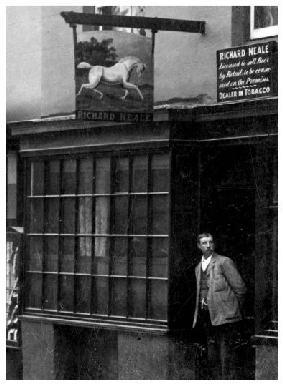
3 minute read
ArundelHistoricSnippets
Part 2 by local historian Mark Phillips
During my research into the history of the town and people of Arundel, I often come across interesting snippets that I note down and put to one side, planning to go back to them in the near future, but rarely find the time to do so. I am sharing some of these with you today in the hope you too will find them interesting peeks into the past. In 1902, to ensure the view from Arundel castle was preserved, the Duke of Norfolk paid Arundel Borough Council £31,000 to purchase the area of farmland along Mill Road known as the Burgesses Brooks. This deal included handing over to the Council forty-eight acres of land for the building of housing. The housing in Torton Hill, Canada Road, Jarvis Road and Pearson Road was later built on this land. From a news clipping dated April 1838 – The distribution of a large quantity of coal to the poor of this parish is now going on and will be continued weekly throughout the winter months. Fifty pairs of good warm blankets have also been distributed among the indigent. Both gifts being given by the respected MP, Lord Fitzalan. Contrary to the popular myth that part of Maltravers Street was ‘levelled’ after Queen Victoria’s coach struggled with the incline during her 1846 visit to the town; there is no mention of this in any of the many news articles, reports or in Victoria’s own diary. Work to level the slope of the hill was carried out a year or two later but any connection to Victoria’s visit was purely coincidental. In 1862 – There were 22 Public Houses in Arundel including the following that no longer exist, The Bakers Arms, The Hare & Hounds, The Hart in Hand, The Mount Pleasant, The White Horse, The Newburgh Arms, The Chestnut, The Queens Arms, The Old Ship, The Jolly Sailor, The Bridge Hotel, The Wheatsheaf, The General Abercrombie, The Ship & Lighter and The Victory. On August 4, 1835, an auction took place at the Arundel Custom House selling the following that had been seized from smugglers: 400 Gallons of Brandy and 116 Gallons of Geneva (Dutch Gin).
Advertisement
In the first half of the 17th century, Thomas Heyney, Arundel’s ‘scandalous’ Anglican vicar, was expelled from his position for ‘… drinking, revelling and neglect of his duties.’ He was found guilty of ‘…having a church in disarray with the chapel and chancel locked and disused and an altar carelessly set up in an aisle.’ He would seldom preach ’… unless it be for special reward,’ and his philosophy towards his flock The White Horse Inn - c 1908. One of the 22 Public Houses recorded in the town in 1862 was ‘… to make them glad with one sermon a month.’ He was also accused of using his position to appoint ‘…scandalous persons to be placed for schoolmasters to corrupt the youth.’ A news clipping from the late 1900s refers to local ironmonger Charles Penfold boring an artesian well in South Marshes, now Fitzalan Road. The drilling was ‘…extremely interesting from the variety of soils it passed through and its great depth. An oak tree was perforated by the augur at over 80 feet below the surface where various fossils and curious deposits were encountered.’ I would like to conclude this month with a few interesting/bizarre extracts from the Arundel Police Occurrence book from 1876-1887: PC Warner impounded a donkey straying on the highway at the Causeway. Mr Atfield’s house blown to pieces by gas at 7.30am. Sent PC Warner home at 12.20am for being drunk. Three fowls stolen from Mr Mashall’s, Green Road. Head of one fowl left behind. A parcel was sent to Mrs Mitchell of Maltravers Street containing a dead child. Took three sailors into custody for disobedience of orders. Mr Constable’s men were emptying the Red Lion dung hole at dinner time. I ordered them to leave off as the smell was so bad. The Mayor locked up a man walking in the streets naked.










